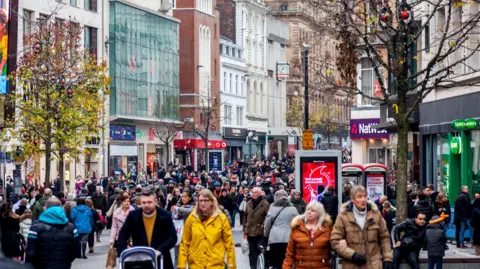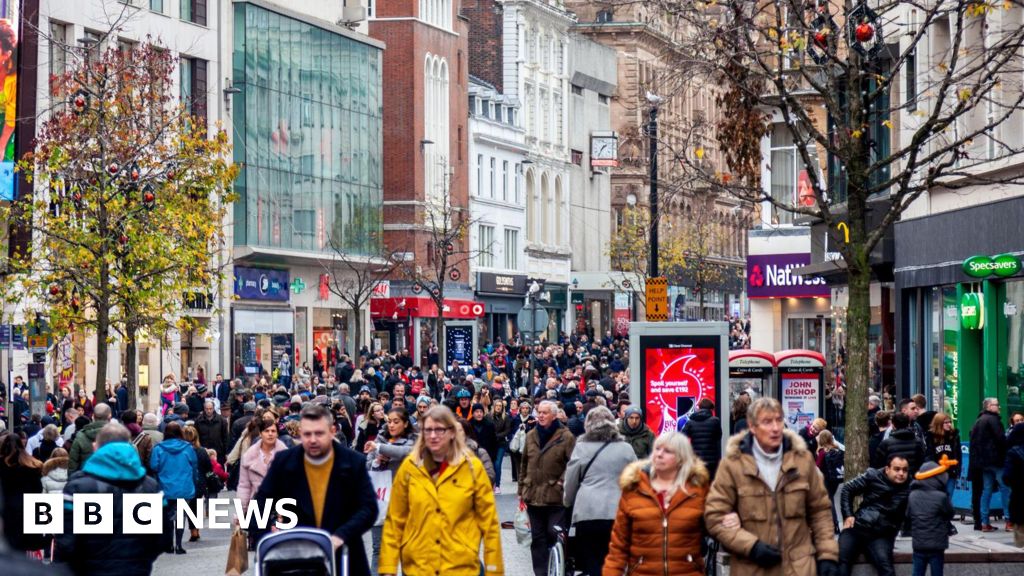Business reporter, BBC News
 Getty Images
Getty ImagesGrowth in the UK’s economy is set to be slower than previously predicted as a result of the trade disruption and uncertainty caused by US trade tariffs, an economic forecaster has said.
The EY Item Club has downgraded its UK growth forecast for this year to 0.8% from 1.0%, and cut it to 0.9% from 1.6% for 2026.
The recently imposed tariffs on the UK and other countries are expected to dampen business and consumer confidence as well as reduce demand for goods and services.
The tariffs include a 10% baseline tax on imports from the UK as well as a 25% tax on all aluminium, steel and cars.
Business investment is predicted to be weaker as many firms become more cautious amid “high levels of uncertainty” in global trade.
“Businesses thrive on certainty, so it’s unsurprising that an unpredictable global market is translating into lower levels of business investment over the short term,” said Anna Anthony, EY UK & Ireland regional managing partner.
Last week, the International Monetary Fund (IMF) cut its growth forecasts for many major economies, including the UK.
It now expects the UK to grow by 1.1% this year, down from its previous prediction of 1.6%.
EY said the US tariffs on the UK and other countries are expected to create a significant obstacle for UK exports.
The US is a key market for UK services and also takes in about 16% of the UK’s exported goods. Even if tariffs against the UK are not extended, EY said any further trade tensions could have an indirect impact on UK growth by damaging the global economy.
“US tariffs will act as a drag on UK growth and we’re likely to see a slowdown in economic activity from the second quarter of this year through to early next year,” said Matt Swannell, chief economic adviser to the EY Item Club.
UK exports are predicted to fall by around 0.5% in 2025 and 0.4% in 2026.
Despite predicting lower business investment, EY said there were “still some grounds for optimism”.
The service sector is still expected to grow this year, and predicted cuts to interest rates should help to boost household and business spending.
EY expects the Bank of England to have cut rates to 3.75% by the end of this year, and then reduce them to 3.5% in February 2026.
EY predicts inflation will rise above 3% in April and remain there for most of the rest of the year, but then expects it to fall to 2.4% in 2026.
